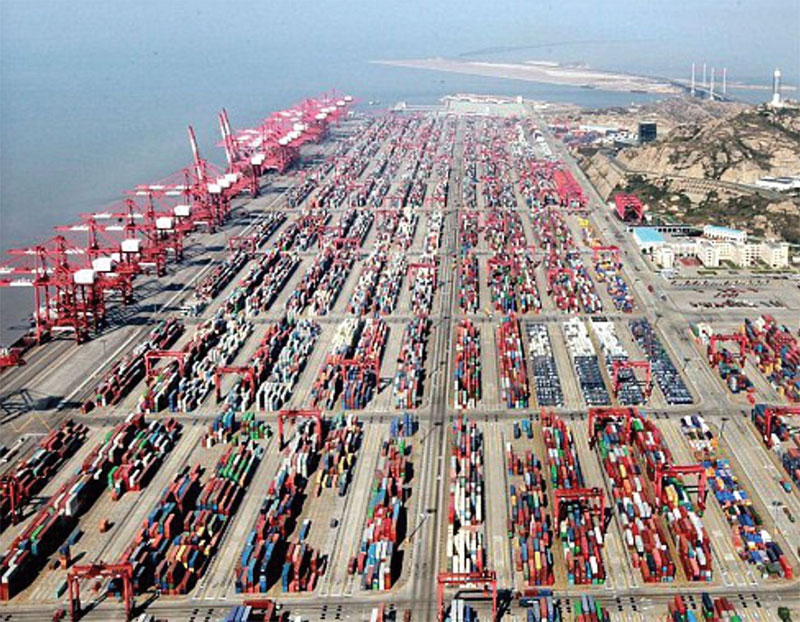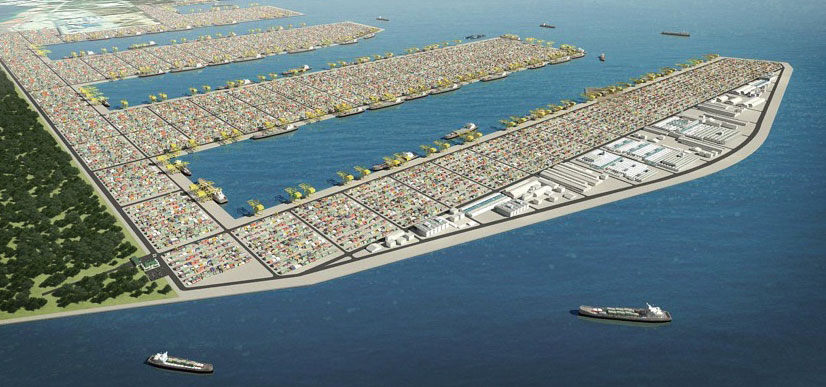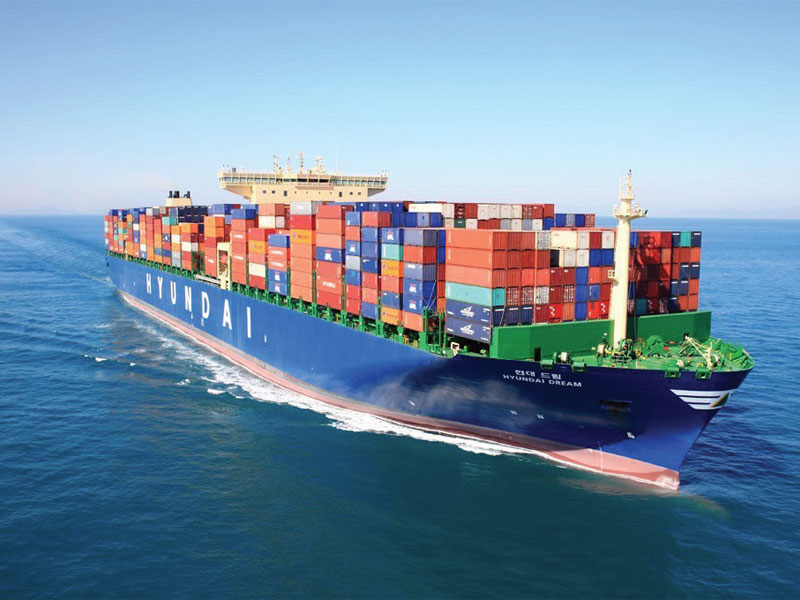Yesteryear in Boxes.
Twenty years ago, the largest container port in the world was the Port of Hong Kong which handled just over 18 million TEUs. In fact, there were only two double digit [in terms of million TEUs] ports in the world - Hong Kong and its city-state rival on the Straits of Malacca, the Port of Singapore, which tallied over 17 million TEUs. In the latest container port rankings, fifteen ports hit double figures with the Port of Shanghai leading the way notching an astounding 43 million TEUs.
Another way of looking at the tremendous increase in port throughput is by assessing daily average. Back when Hong Kong was leading the pack, it handled just about 50,000 TEUs a day – a nice total – but in 2019 Shanghai averaged over 118,638 TEUs daily. In short, the Port of Shanghai’s weekly total would be a nice annual total for most container ports in the world. Back in 2000, the Italian port of Gioia Tauro ranked number 20 at just under 2.5 million TEUS. In the current list the Thai port of Laem Chabang handling over 8 million TEUs in 2019 holds down the 20th slot.

Ports achieved these remarkable numbers with annual double digit increases in throughput as both ship size and ship calls increased. Back twenty years ago only six container ports in the world could boast an annual throughput of 5 million TEUs. There are now thirty-two container ports handing 5 million TEUs annually and more to enter the 5 million TEU club in the near future.
Collectively, the TEU numbers are so large as to be mind-numbing. What happened?
China Syndrome
The easiest though not necessarily the most complete answer is that ‘China happened’. The growth in box traffic between China and Europe, China and North America and China and the intra-Asian nations grew exponentially. The London-based TT Club in their “Brave New World” look at the future of container transport in 2043 wrote of the lead up to the present: “China’s integration into the global economy – catalyzed by establishing the Shenzhen Special Economic Zone and Deng Xiaoping’s reforms in the 1980s, and culminating in its 2001 accession to the World Trade Organization – unlocked a low-cost labour force of almost one billion people. This led to a wave of offshoring and the fragmentation of supply chains, ultimately making China the ‘factory to the world’.”
Consider twenty years ago China had four ports in the top twenty in container volumes (Hong Kong/SAR, Shanghai, Shenzhen and Qingdao). Now, China boasts six of the top ten container ports in the world and has over 30 ports handling in excess of 1 million TEU throughput. Additionally, Shanghai is the world’s largest container port at 43.3 million TEUs and has remained the boxport leader since wresting the title from Singapore in 2009.
The China factor looms larger when you consider the top 100 container ports. China has 24 ports within the top 100 container ports in the world as ranked by annual TEU throughput. By way of comparison all of Europe has only nineteen container ports on the list and North America ten.
This is not to say the tariff war between the US and China and the more recent Covid-19 induced recession haven’t taken their toll on box figures. The days of mailing it in double digit port growth from organic increases in container shipping appear to be over. Blank sailings and container vessel layups have hit all-time highs and there are no guarantees of quick return to normal in a post-pandemic economy.
The tariff-wars have already accelerated the process of de-coupling sourcing from China and in many cases, re-establishing sourcing in Southeast Asia. The evidence of the new sourcing is in the rise of Southeast Asia’s port numbers. Cap Mai in Vietnam is now at 3.75 million TEUs, and Ho Chi Minh City (Dong Nai/Cat Lai) handled nearly 6.6 million TEUs in 2019. Both ports wouldn’t have made the top 100 a decade ago. But the expansion into South Asia is not exclusive to Vietnam. Thailand’s Laem Chabang recorded over 8 million TEUs, Manila over 5 million TEUs and the Malaysian ports of Port Klang and Port Tanjung Pelepas cleared over 12 million TEUs and 9 million TEUs respectively in 2019. And Indonesia’s principal container port Tanjung Priok recorded 7.9 million TEUs in 2019, just more evidence of the extent of the shift of sourcing to Southeast Asia. Intra-Asian trade lanes are now estimated to be the largest in the world eclipsing the traditional linehaul lanes of China to Europe and China to North America.
Big Ships, Big Ports and Big Futures
The biggest recipient of the Southeast Asian sourcing surge could be the Port of Singapore – the world’s 2nd largest container port at almost 37.2 million TEUs. The continued growth of the Port of Singapore is remarkable and attributable to the ability of the Port Singapore Authority (PSA) to adjust to the changing economic climate. The Port has become a bellwether for other ports in the world seeking a compass for navigating the often-bewildering conditions facing port planners.
Being at the eastern end of the Straits of Malacca has given Singapore the geographical advantage of straddling the Asia-European trade routes as well as to be positioned in the middle of the intra-Asia trade lanes. This geographical convergence enables the Port of Singapore to be both an international containership hub as well as a regional transshipment port. But to maintain these dual-roles Singapore has had to be in the forefront of being big ship ready [With the “big” in big ships rapidly moving from 9,000 TEUs to now 24,000 TEUs with the launch of HMM’s new class] while maintaining the ability to efficiently handle smaller ships…and to do so within the landside confines of an island city-state.
To help keep pace, PSA broke ground in October of 2019 on the new Tuas Port which when fully completed in 2040, is expected to be world’s largest fully automated terminal, featuring automated wharf and yard functions, and full-electric automated guided vehicles. The greenfield site [built on reclaimed land] represents a significant investment for land-challenged Singapore.

The concept is to increase terminal efficiency consolidation: Singapore currently has five container terminals Tanjong Pagar, Keppel, Brani, Pasir Panjang Terminal 1 and Pasir Panjang Terminal 2 and truck transshipment between terminals is an inefficient but necessary solution to the terminal spread. With the completion of the Tuas Terminal, all city terminals at Tanjong Pagar, Pasir Panjang, Keppel and Brani, will eventually be merged at Tuas. When full completed the terminal will be able to handle 65 million TEUs – 15 million TEUs more than the capacity of the current five terminals. The first of four phases of construction at Tuas port is due to be completed in 2021 at an expected cost of about $1.8 billion, but the Covid-19 pandemic could delay the schedule.
While the scale of Singapore’s ambitions sets its port project aside, there is massive port expansion underway – albeit slowed by the pandemic – through all quarters of the globe. No doubt, China’s Silk Road policy is underwriting vast amounts of port development, particularly in Asia, the Mediterranean, and even in Latin America. Will the Silk Road investments payoff is anyone’s guess? But Beijing is certainly committed to playing the long game in port investments.
But not all ports are prospering – even in Asia a few are finding it difficult to measure up.

For example, Hong Kong’s 18.3 million TEUs is impressive but that is nearly the same total the port posted in 2000, when it was the largest containerport in the world. Given Hong Kong’s current socio-economic dilemma and with the rise of neighboring South China ports, it’s looking increasingly unlikely that Hong Kong will remain in the top ten of containerports through the new decade.
North America
While Covid-19 has had a serious impact on port figures for North American ports through two quarters of 2020, the real question is how much of this is an outlier? Certainly, the West Coast ports, particularly the San Pedro ports of Los Angeles and Long Beach along with the Port of Oakland have been impacted by the pandemic’s effect on the supply chain. And these ports are not alone as The Northwest Seaport Alliance (NWSA) of Tacoma and Seattle along with the Canadian ports of Vancouver and Prince Rupert have all suffered to varying degrees.
Part of the problem lies with the Panama Canal expansion. Since 2016, U.S. East Coast ports have seen their share increase while West Coast has remained static. This trend has been exacerbated by low bunker fuel prices which have made long haul routes from Asia through the Suez or around Africa more economic with relays to the U.S. East Coast. Added to this has been a concerted effort by many East Coast ports to dredge and improve facilities to be “big ship ready”. Conversely, port directors on the West Coast now recognize that to regain market share they will have to again induce more direct ship calls from Asia. With only three carrier alliances (2M, Ocean and The Alliance) the loss of any single alliance can be devastating to a port. Larger ships and fewer calls create a conundrum for port authorities large and small.
Nonetheless, as the ships get bigger, the Panama Canal option is again off the table and the advantage shifts to the West Coast – with the caveat that the shift in sourcing to Southeast Asia and South Asia somewhat evens up the economics for services.
How fast the global economy bounces back from the pandemic will certainly be reflected in the ports as they gear up for the next generation of boxships and return of volumes. Will it happen in 2021 is at this time only a guess, but as history has shown the volumes do indeed return, bigger than before.





